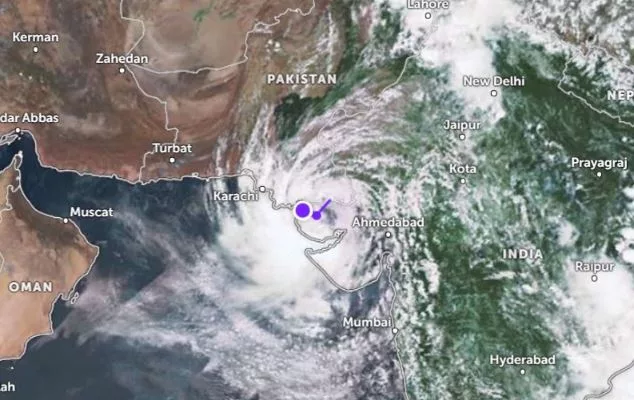Cyclone Asna is currently about 300 kilometers from Karachi and Gwadar and 230 kilometers from Ormara, according to an alert from the National Disaster Management Authority (NDMA) issued on Saturday.
As the cyclone continues to move away from Sindh’s coastal areas, it is expected to head further west-southwest towards the Oman coastline before dissipating at sea without making landfall.
The meteorological department predicts rough sea conditions with winds reaching 60 to 70 km/h in the metropolis. Fishermen in Sindh are advised not to venture out to sea today, while those in Balochistan should avoid deep-sea fishing until tomorrow.
The NDMA’s National Emergencies Operation Centre (NEOC) has issued warnings about potential coastal flooding in Sindh and possible flooding in low-lying areas. Strong windstorms could damage crops, billboards, electrical poles, solar panels, and hoardings. Thunderstorms may also increase the risk of lightning strikes and disrupt electricity and other utilities.
The public is advised to stay away from the seaside and beach areas and to follow local authorities’ guidance. NDMA has instructed all relevant departments to take precautions against possible flooding and extreme weather conditions.
In Karachi, the traffic police have urged drivers to slow down and maintain a safe distance between vehicles due to rain from Cyclone Asna. Areas such as II Chundrigar Road, Saddar, Burns Road, Defense View, Mehmoodabad, and others have experienced rainfall. The city’s roads are slippery, and sudden braking should be avoided to prevent accidents.
Rainfall measurements from various Karachi areas over the past 24 hours are as follows:
- Quaidabad: 39 mm (highest)
- Surjani Town: 24 mm
- Korangi: 18.4 mm
- Nazimabad: 17 mm
- North Karachi: 16.5 mm
- University Road: 16 mm
- Jinnah Terminal: 16 mm
- Airport: 15 mm
- Mauripur: 13 mm
- Mosamyat: 12.4 mm
- Gulshan-e-Maymar: 11.8 mm
- Keamari: 8.8 mm (lowest)




